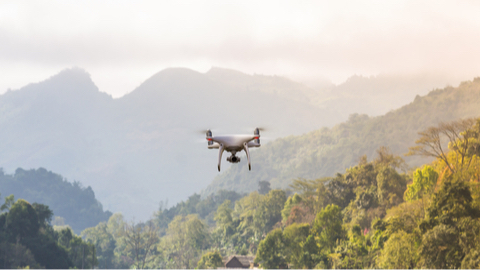
Researchers at MIT have developed a trajectory-planning model that helps drones safely fly at high speeds through previously unexplored areas.
The model – named “FASTER” – estimates the quickest possible path from a starting point to a destination point across all of the areas the drone can and can’t see, with no regard for safety. But, as the drone flies, the model continuously logs collision-free “back-up” paths. When the drone is unsure about a particular area, it detours down the back-up path and reroutes its path. This enables the drone to fly at high speeds along the quickest trajectory while occasionally slowing down slightly to ensure safety.
“We always want to execute the fastest path, but we don’t always know if it’s safe. If, as we move along this fastest path, we discover there’s a problem, we need to have a backup plan,” said Jesus Tordesillas, a graduate student in the Department of Aeronautics and Astronautics at MIT. “We obtain a higher velocity trajectory that may not be safe and a slow-velocity trajectory that’s completely safe. The two paths are stitched together at first, but then one deviates for performance and the other for safety.”
In forest simulations, where a virtual drone navigates around cylinders representing trees, FASTER-powered drones safely completed flight paths about two times quicker than traditional models. In real-life tests, FASTER-powered drones maneuvering around cardboard boxes in a large room achieved speeds of 7.8 meters per second.
A potential application for FASTER, which has been developed with support by U.S. Department of Defense, could be improving search-and-rescue missions in forest environments.
“But the unknown area doesn’t have to be forest,” co-author Jonathan How, the Richard Cockburn Maclaurin professor of Aeronautics and Astronautics, said. “It could be any area where you don’t know what’s coming, and it matters how quickly you acquire that knowledge. The main motivation is building more agile drones.”
